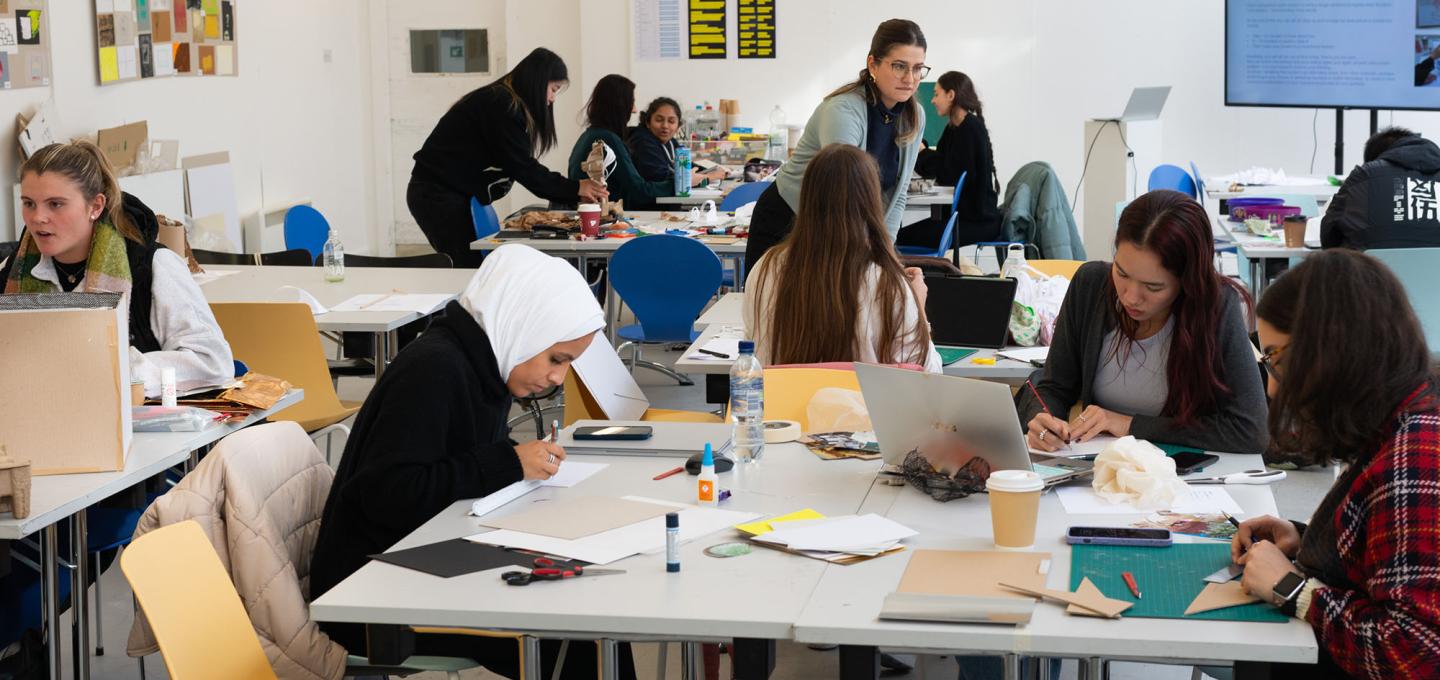Outline
Interior Designers come from all walks of life but share a passion for people and places, with a desire to enhance both the lives of the user and wider society.
The experience of interior space, and its inhabitation by people can be considered as both the primary driver and the ultimate test of successful building design. When buildings change from the inside out, they reflect both societal change and personal values, as the external envelope becomes subservient to the inhabited room and the activities it contains.
When we adapt, conserve, re-use and re-appropriate existing buildings, Interior Designers delicately balance a need to preserve, with the desire to renew, navigating the blurred boundaries between real and artifice, place and time, from room to city.
Our programme here at Edinburgh will introduce you to the study of Interior Design in our dedicated studio space. Experienced permanent staff are joined by visiting industry experts who will support and challenge you to create innovative and ambitious design responses.
Learning facilitates experimentation, risk taking, and exploration of and around the subject. Students are encouraged to bring their own themes and agendas to the table, and to share and learn from our combined diversity.
A variety of design projects, offer students experience across many sectors including retail, hospitality, exhibition, and the public realm, each embedded with a focus on human activity and user experience. We consider the moral obligations of the designer, through multiple lenses of accessibility, inclusivity, introducing statutory legislation and technical requirements, alongside debate and consideration of environmental impact.
Your design education at ECA will include dedicated studies in material selection, interior construction detailing and lighting design; zooming in to focus at small scale on surfaces, finishes and junctions. We encourage thinking through making, and a hands-on approach, to enhance our understanding of how things go together. This explicit focus on the fabric of the built interior equips our students with specialist technical knowledge and enhanced professional skills, articulated through critical and reflective discourse, providing a platform for further intellectual debate.













